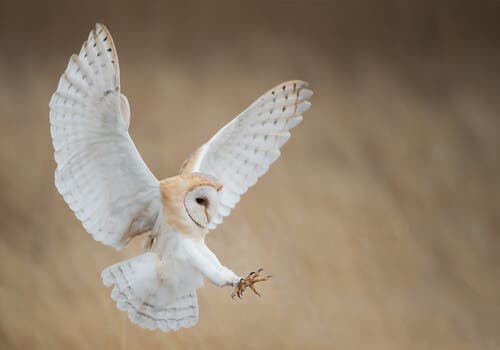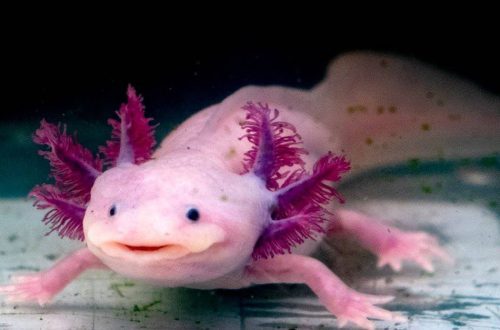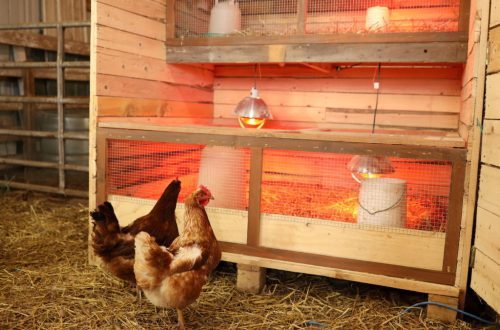
Nocturnal birds, species of nocturnal birds of prey and owls as a prominent representative
Birds of prey are usually called birds that hunt their prey in flight. Their characteristic features are excellent eyesight, as well as strong claws and a beak that serve to capture and kill a target. Hearing also plays an important role in the hunting of raptors.
Species of birds of prey
Birds of prey are divided into two types:
- diurnal predatory;
- nocturnal predators.
Diurnal birds of prey include the families
- hawks;
- skopins;
- falcons;
- secretary;
- american vultures.
Nocturnal birds of prey include a detachment of owls, in which two families are distinguished: owls and barn owls. The most famous representatives are owls (white, polar, eared, marsh, hawk and others), owls, owls and owls (brownies, passerines and others), owls (bearded, long-tailed, gray), barn owls and scops.
Owl
Features of appearance and their impact on lifestyle
Almost all owls have common features. On a large head are large eyes, which appear even larger due to the plumage fanned around them. This is the front disk. They have a short curved beak, at the base of which are the nostrils.. These birds have dense and soft plumage, a rectangular tail, rather large rounded wings, with the help of which it quickly and silently plans and flies. Wings may differ depending on the species: in birds hunting in the forest, they are quite short, and in those looking for prey in open areas, they are long.
Feet and fingers are covered with feathers up to the claws, with the exception of fish owls. Due to the fact that the front fingers are reversible, owls can sit on branches, and the presence of long and sharp claws gives them the ability to firmly capture their prey. A striking feature that distinguishes them from other birds is the absence of goiter.
The color of owls is protective, it helps owls to camouflage themselves against the background of the environment and be almost invisible in the daytime. Birds of prey of this species living in the forest have a brown shade of feathers, while those living in coniferous forests change to gray. Owls living on the plains have lighter feathers, and in the deserts they have a reddish hue. The color of males and females is always the same, with the exception of snowy owls. Males have a snow-white color, and females are motley, with a brownish tint.
Owls are nocturnal birds of prey; they have sharp eyesight and good hearing to hunt in the dark. Owls have large eyes that look forward, but the ability to turn their heads almost 180 degrees provides a wider field of view. Ears are on both sides of the facial disc, and not in all species they are symmetrical, may differ in size or be shifted up or down. These birds have a very large inner ear, as well as a huge number of neurons in the area responsible for hearing. Due to these features, owls perfectly hear their prey at night.
The lifestyle of most owls is nocturnal. The exceptions are the little owl and short-eared owl. The Arctic hawk and snowy owls hunt at night during the summer, and during the winter they seek food during the day. The remaining members of the owl family sleep during the day on branches, in rock crevices, in the attics of houses. Some species build their nests in burrows or depressions in the ground.
Almost all species of owls live all their lives in one place and fiercely protect it from other birds, especially predators. However there are also species migrating for the wintere.g. short-eared owl. The rest can change their habitat only in the absence of food.
These birds feed on mice, rats, rabbits, earthworms, insects, snakes, fish, and crustaceans. On rare occasions, they may eat carrion. Mammals are caught on the fly, and fish are waiting, sitting on a branch above the water.
Owls are very talkative. In addition to the well-known hoot, their vocabulary includes a large number of other sounds, which they emit when they are hungry, protect the territory, during the breeding season, etc.
Owl breeding
The reproduction of these nocturnal predators is greatly influenced by favorable weather conditions and the availability of food. If these factors are met, then the breeding season comes earlier, there will be more eggs in the nest. Otherwise, there will be 2-3 eggs in the clutch.
Depending on the species, some owls create pairs for the rest of their lives, others form a new pair in each subsequent mating season. In most cases, nests of other birds are found for laying eggs., tree hollows, rock crevices. Some species use rodent burrows for this purpose or lay their eggs in the grass. They rarely build their own nests. Having chosen a suitable place, within a few days the female lays up to 10-14 eggs. Incubation of chicks, depending on the species, lasts from 24 to 36 days and begins from the day the first egg is laid. Accordingly, the chicks appear within a few days. In the future, it is not uncommon for older chicks to take all the food in a difficult time, and the younger ones go hungry.
Helpless chicks are borneyes open at 2 weeks. First, the male brings food, and when the cubs grow up and more food is needed, the female also flies away to hunt. After 20-25 days, the owls get out of the nest. They fly poorly at first, so they do not move far from the nest.
The appearance and lifestyle of other nocturnal birds of prey are very similar to owls, although there are slight differences and features.





